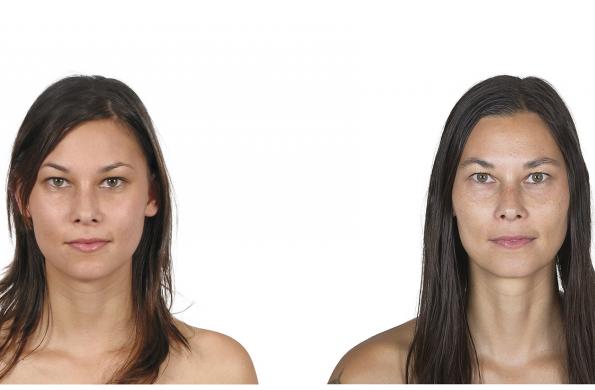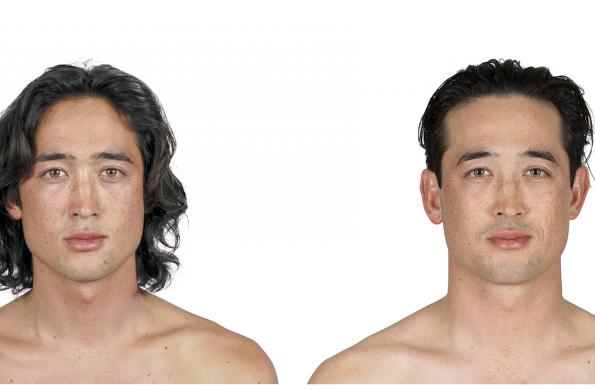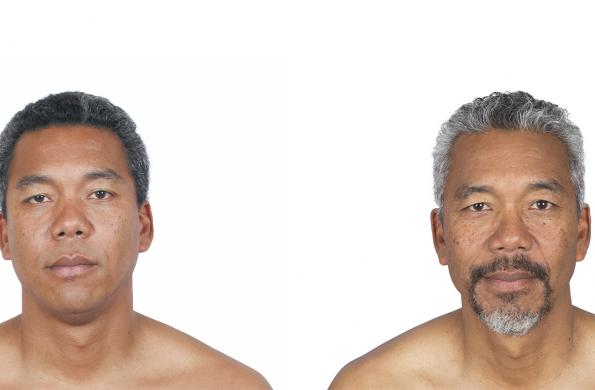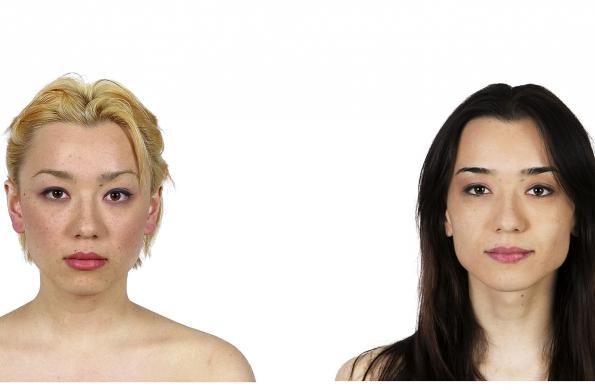

The word “hapa” is the Hawaiian transliteration of the English word “half.” Much of its current usage derives from the phrase hapa haole, meaning “half white.” The phrase was originally coined by native Hawaiians to describe the mixed offspring resulting from encounters between islanders and White settlers. In subsequent years, hapa (or Hapa) has come into popular usage away from the islands, most frequently embraced by Asian/Pacific Islander Americans of mixed descent.
Artist Kip Fulbeck created The Hapa Project in 2001, traveling the country to photograph over 1,200 volunteers who identified as Hapa. The Hapa Project’s goal was to promote awareness and recognition of the millions of Hapas in the United States; to give voice to multiracial people and other previously ignored ethnic groups; to dispel myths around exoticism, hybrid superiority, and racial homogeneity; and to foster positive identity formation in multiracial children. In 2006, Fulbeck published the first book and premiered kip fulbeck: part asian, 100% hapa, the first museum exhibition to explicitly explore Hapa identity. That exhibition remains one of the most popular in the history of the Japanese American National Museum, setting attendance records before traveling throughout the US and abroad. The exhibition broke new ground in exploring identity through photographic portraits of mixed-race subjects, paired with the participants’ handwritten responses to the typically posed question, “What are you?”
Since then, America’s mixed-race population has grown exponentially, with awareness of mixed-race issues dramatically increasing alongside. Fulbeck addresses this progress with his highly anticipated follow-up project, hapa.me. In the new exhibition, the original photographs and statements from the 2006 exhibition are paired with contemporary portraits of the same individuals and newly written statements, showing not only their physical changes over 15 years, but also their changes in perspective and outlook on the world. The stark, plain format of the photographs remains the same, allowing viewers to focus on the distinctive features of the subjects.
In addition, hapa.me includes portraits of hundreds of first-time participants and a new interactive section where, on select days, viewers can join the community by having their portrait taken and writing their own personal statement. A 200-page color catalog will be published in conjunction with the exhibition, featuring essays by Hapa luminaries Velina Hasu Houston, Cindy Nakashima, Keao NeSmith, and Paul Spickard.
Kip Fulbeck is a professor of art at the University of California, Santa Barbara, where he is the recipient of the university’s Distinguished Teaching Award. He has authored five books including Part Asian, 100% Hapa and Mixed: Portraits of Multiracial Kids, and has exhibited his artwork in over 20 countries. Fulbeck has been featured on CNN, MTV, Voice of America, The New York Times, The Today Show, and various NPR shows.
Associate Sponsors:
Richard and Masako Murakami
![]() Pasadena Art Alliance
Pasadena Art Alliance
Additional support provided by Helen Sperber.
Media Sponsor: ![]()





